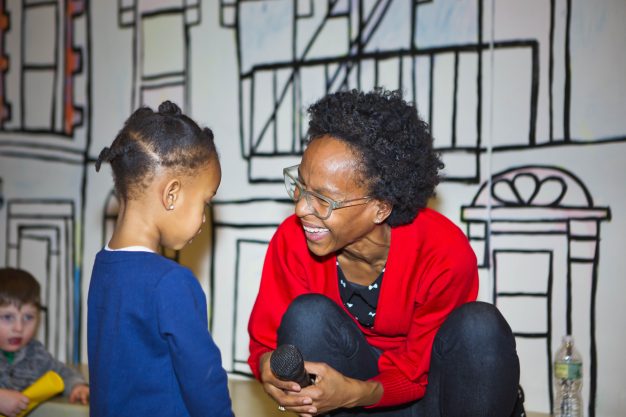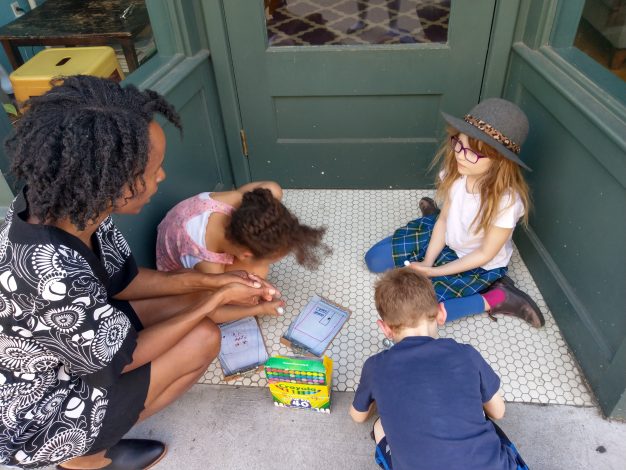
Putting young ‘city-zens’ at the heart of urban planning
How does a child ‘see and experience’ a city? Solve this and you unlock the secret to what really constitutes a child-friendly environment that works for everyone. It’s a question which urban planner Aminah Ricks works tirelessly to answer, and she will be sharing her experiences at this month’s Child in the City World Conference.
It is only through listening – really listening – to what Aminah calls society’s youngest ‘city-zens’ and putting them at the heart of urban planning processes can cities be transformed.
She is the founder of Future Planners, an educational consultancy which teaches children to ‘read and to see’ the city and communities which surround them. Aminah passionately believes in the notion that igniting a child’s passion and creativity can produce some truly groundbreaking concepts to benefit the city environment for all who live and work there.
Ethos
Though based in New York City, you can forget any ideas that Future Planners is parochial in its outlook. Nothing could be further from the truth. The ethos of Future Planners applies wherever the collective will is strong enough to realise its goals. Aminah lived for a decade in Italy, planning, designing and renovating, and in the US is a champion for walkable cities. She herself has visited more than 70 cities across the globe and her message is simple – how do children experience our cities?
At the Child in the City Conference (September 24-26) she will make a poster presentation, Youth Oriented City Planning Benefits More than Children, under the theme Children’s rights in urban development and regeneration. This will look at how we can prevent children’s rights being compromised by the imperative for economic growth or budgetary pressures on urban planning.
“The lens through which children perceive our cities reveals what works, and what can be improved,” says Aminah. “From the state of our streets and sidewalks, the ease-ability of our methods of public transportation, the number and quality of green spaces, to the levels of noise and pollution – children provide the gauge by which we must measure the success of our communities.”
Exhibition
As part of the poster exhibition, she will convey these messages through the words, photographs and designs of children aged from five to 11 years old, telling the story of how Future Planners has tailored classes and workshops in schools, museums and other institutions across the USA and Europe.

In addition to teaching, Aminah also consults with teachers on curriculums and finding ways to emboss their teaching with principles of urban planning. She explains: “Urban planning is a disciple which covers so much territory, from math to geography, and from design to history. It is a great way to get the ideas of Future Planners in front of as many children as possible, more than I can reach alone. So far this has occurred only in Brooklyn but there is an opportunity to do the same in Italy for the 2019/2020 academic year.”
Continuing that theme, the flexibility of being able to apply Future Planners’ principles in any urban setting was perfectly demonstrated by a summer workshop which Aminah held in the Italian city of Spoleto. She worked with a group of local urban planners to provide children with hands-on opportunities to redesign a city environment.
Nuances
“It was really fun, a lot of children and families attended,” says Aminah, who has dual US and Italian citizenship, speaks fluent Italian and is thus able to navigate any cultural nuances which might influence how children from different backgrounds engage in the process.
“The curriculum I set up was to have the children design on paper and/or build models with selected materials of a playground they would like to see in the city. The city has few, not well maintained, playgrounds for kids, so this was an issue that resonated well,” she adds.
The three-hour workshop was held on a Saturday morning, allowing enough time to gauge some fascinating child-friendly insights, but not so long for their attention to waiver.
Seamless
“It was great to see the work I do in New York so seamlessly adopted into another culture, language and setting. We occupied an outdoor piazza called Largo Ferrer and it was a free event, open to children 4-11 years old. I made sure they all knew that they were no longer children but mini-urban planners and their ideas we important and valid.
“I told them the piazza was their studio and there were no bad ideas – most children stayed the entire time, and their concentration and intention was so inspiring,” adds this urban planner, architect, writer, teacher and mother, who is someone worth listening to.
Child in the City World Conference 2018 takes place in Vienna from September 24-26. Aminah’s display will be part of the Poster Exhibition, on the morning of Tuesday, September 25. There is still time to book your place at the conference – view the full programme and speakers and book your place.




